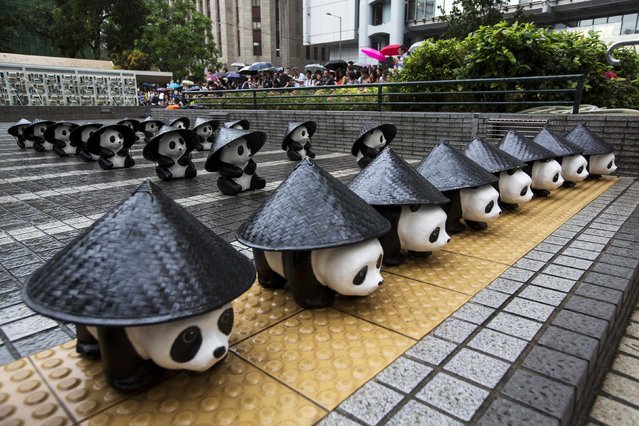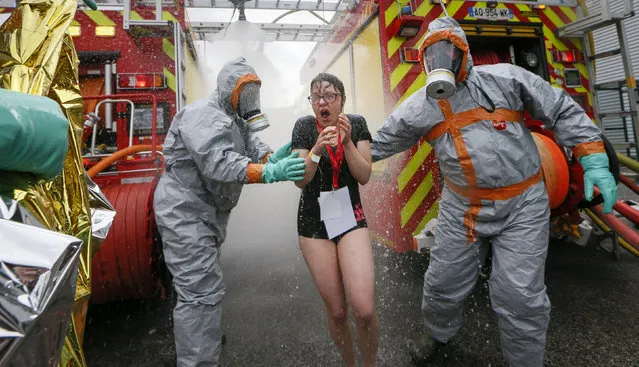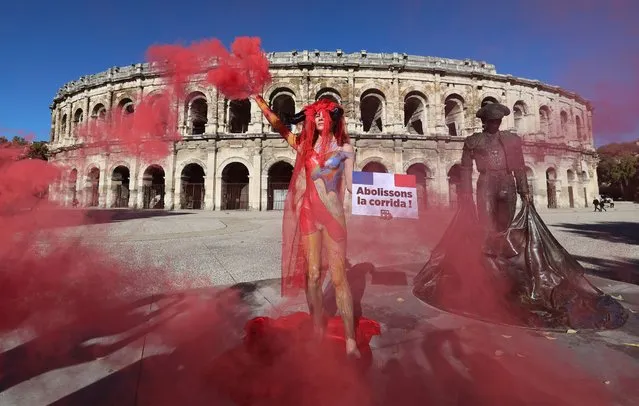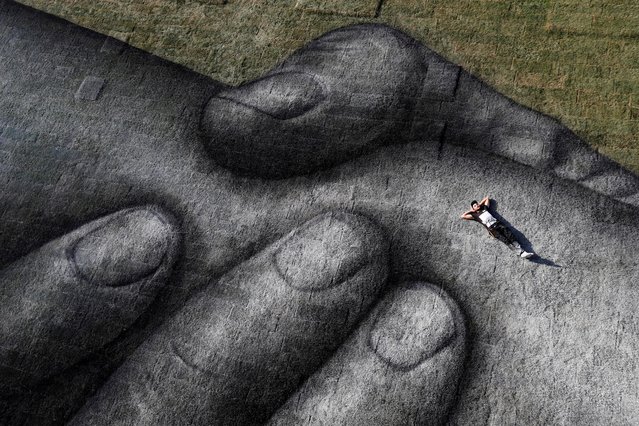
A model presents a creation by French designer Jean Paul Gaultier as part of his Spring/Summer 2015 women's ready-to-wear collection during Paris Fashion Week September 27, 2014. (Photo by Gonzalo Fuentes/Reuters)
30 Sep 2014 09:05:00,post received
0 comments







